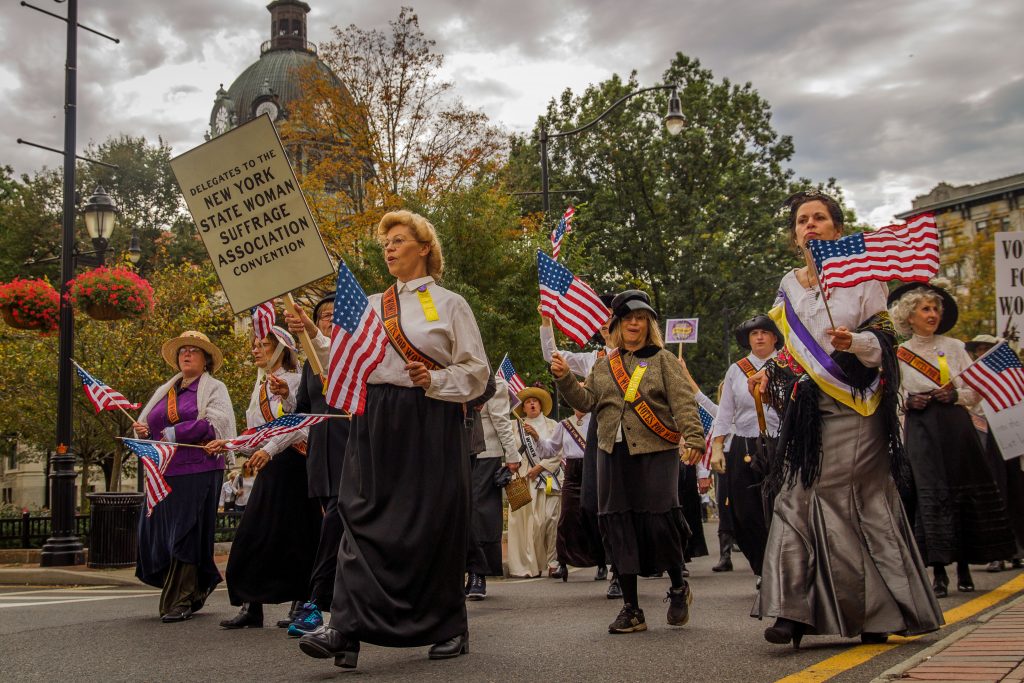
Five years earlier, in 1913, a march advocating for suffrage was held in the city of Binghamton, but women weren’t granted the right to vote statewide until 1917. Suffrage wasn’t passed nationally until the 19th Amendment in 1920.
A re-enactment of the initial march, complete with early 20th-century attire, was held Saturday on Main Street in Downtown Binghamton. Organized by the League of Women Voters of Broome and Tioga Counties and the Broome-Tioga Suffrage Anniversary Committee, the event was a part of the centennial celebration of women’s suffrage in New York state.
After the march, costumed re-enactors gathered at the Landmark Church on Court Street, speaking on behalf of the men and women who marched more than 100 years ago: Ida Gitchell, a former Binghamton resident, lobbied for the original 1913 march to take place in Binghamton; Former Binghamton Mayor George Green was a prominent male sympathizer who attended the original march; and Willis Kilmer, a newspaper owner in Broome County, aided the cause by publishing a range of opinions on the movement in his paper.
Many who attended the event emphasized the importance of remembering the initial New York women’s suffrage movement today. Binghamton resident Debra Hogan, 49, who attended the march as a spectator, said she wants everyone to exercise this right.
“More people should take advantage of their right to vote,” Hogan said.
Local historian Gerald Smith, 62, helped to organize the re-enactment and portrayed a male sympathizer to the suffrage movement. He said women are still fighting for equal voting rights in 2017.
“There are still efforts to curtail votes, so it’s a struggle that goes on,” Smith said.
Conrad Taylor, a Binghamton city council member representing the Fourth District and a senior majoring in political science, portrayed James Macindoe, president of Binghamton’s Common Council in 1913.
“What couldn’t escape me throughout the afternoon was that there’s still so much to do,” Taylor said. “Keep in mind that this is the 100th anniversary of white women getting to vote.”
Members of the League of Women Voters of Broome and Tioga Counties stressed the importance of having a fully informed electorate. Chenango resident Pat Giglio, 68, said she believes a more intense political climate in the United States today will increase voter turnout in the next election.
“I really want everyone to get all of the information that they need and then go out and vote,” Giglio said.
Representatives from the League of Women Voters sat at a table outside the church, encouraging attendees to register to vote.
After the event, New York state Assemblywoman Donna Lupardo spoke to attendees and marchers. She said that it’s important for supporters at the march to continue working for further reform.
“Women are still challenged on a number of issues, everything from pay equity, to affordable child care, breaking that glass ceiling,” Lupardo said.
Read more from Pipe Dream News:
Amy Dacey, ’93, speaks on experience in human rights politics
Student groups volunteer at garbage clean up for Gandhi Day
Paint the Town Purple raises awareness for domestic violence
Sororities vie for spot on campus
SUNY Board of Trustees votes to extend in-state tuition to Puerto Ricans, US Virgin Islanders


